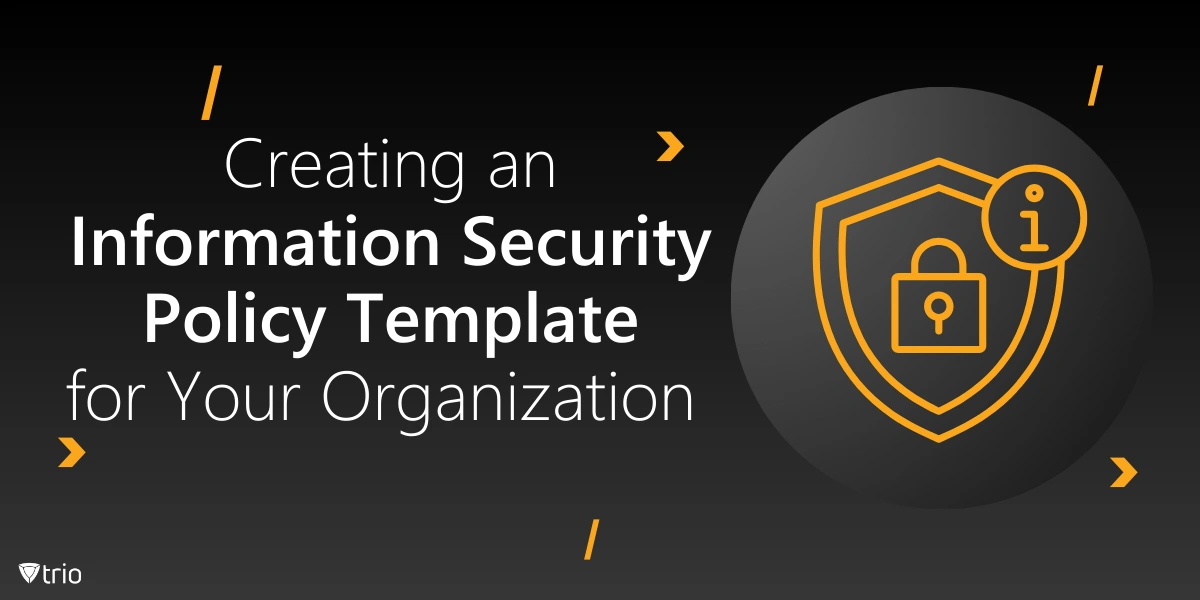In today’s digital age, securing an organization’s information assets is more important than ever. According to Bluefin, the global annual cost of cybercrime is predicted to reach $10.5 trillion by 2025. With the growing number of cyber threats, data breaches, and stringent regulatory requirements, organizations must adopt robust information security policies to safeguard their sensitive data. An Information Security Policy outlines the procedures, guidelines, and responsibilities for protecting the confidentiality, integrity, and availability of information assets. In this blog, we’ll explore why having a strong Information Security Policy is essential and how to create a comprehensive policy template tailored to your organization’s needs.
Why an Information Security Policy is Essential
An Information Security Policy serves as the foundation of an organization’s efforts to protect its data and digital assets; it’s cybersecurity policy. It ensures that all employees, contractors, and third parties understand their roles and responsibilities when it comes to securing sensitive information. Without a well-defined policy, organizations face increased risks of data breaches, unauthorized access, and compliance violations.
In addition to protecting the organization’s reputation and assets, an Information Security Policy helps maintain trust with customers, partners, and stakeholders by demonstrating a commitment to data protection. Furthermore, it ensures that the organization complies with various legal and regulatory requirements, such as GDPR, HIPAA, and PCI-DSS, avoiding hefty fines and penalties.
When information within an organization is not adequately secured, the risks are significant and far-reaching, impacting both operational integrity and trust. One of the primary dangers is data breaches, where sensitive data—such as customer details, financial information, intellectual property, or trade secrets—can be exposed to unauthorized individuals. This exposure can lead to identity theft, financial loss, or competitive disadvantages.
Beyond direct data theft, insecure information can also lead to regulatory non-compliance, especially in industries where strict data protection laws apply (e.g., GDPR, HIPAA). Failure to meet these compliance requirements can result in severe fines, legal penalties, and reputational damage. Additionally, compromised data can disrupt daily operations by facilitating malware, ransomware attacks, or insider threats, ultimately leading to significant downtime and costly recovery efforts. Inadequate information security puts an organization’s entire ecosystem at risk, from employees to clients.
Key Elements of an Information Security Policy Template
To create a robust Information Security Policy, organizations need to consider several key information security standards that address different aspects of data protection and security. Below are the essential elements your policy template should include:
1- Roles and Responsibilities
Establish clear responsibilities for everyone involved in managing and protecting information, from the Information Security Officer (ISO) to system administrators and regular employees. Assigning accountability ensures that everyone knows their role in maintaining security protocols.
2- Access Control
Define strict guidelines for managing access to your organization’s data and systems. Implement user authentication protocols, role-based access control, and regular access reviews to limit access to sensitive information.
3- Data Protection Measures
Ensure that all sensitive data is classified and encrypted based on its level of importance. This section should outline how data is stored, transferred, and handled, including encryption standards and backup policies.
4- Incident Response Procedures
Develop a clear incident response plan that outlines how to detect, report, and mitigate security incidents. Having predefined processes in place for managing breaches or security issues is critical to minimizing damage.
5- Compliance and Auditing
Outline the need for regular security audits and reviews to evaluate the effectiveness of security measures and ensure regulatory compliance. This section should include references to relevant data protection laws like GDPR and HIPAA.
Implementing Your Information Technology Security Policy
Once your Information Security Policy is developed, it is crucial to implement it effectively across your organization. Start by communicating the policy to all employees and stakeholders. Ensure that they understand the importance of adhering to the policy and how it impacts their daily activities.
Providing regular security awareness training is essential to keeping everyone informed about current threats and best practices. This training should cover topics such as identifying phishing attacks, managing passwords securely, and reporting security incidents. In addition, periodic reviews and updates of the policy are critical to adapting to new security threats and regulatory requirements. This helps ensure that your organization’s information security remains strong and resilient in the face of evolving challenges.
Download our Free Information Security Policy Template
Developing a comprehensive Information Security Policy is essential to protect your organization’s data and ensure compliance with industry regulations. By implementing strong access controls, securing sensitive data, and establishing clear roles and responsibilities, organizations can minimize the risk of security breaches and maintain a secure IT environment. Start building your Infosec Policy template today to strengthen your organization’s cybersecurity posture and protect your valuable assets. Download our Information Security Policy Template now.
Secure your organization’s information assets with Trio, the all-in-one solution for managing IT security and compliance. Whether you’re safeguarding sensitive data or enforcing access controls, Trio’s advanced tools simplify the process. Sign up for a free trial today and take the first step toward a more secure, compliant IT environment!
Get Ahead of the Curve
Every organization today needs a solution to automate time-consuming tasks and strengthen security.
Without the right tools, manual processes drain resources and leave gaps in protection. Trio MDM is designed to solve this problem, automating key tasks, boosting security, and ensuring compliance with ease.
Don't let inefficiencies hold you back. Learn how Trio MDM can revolutionize your IT operations or request a free trial today!




